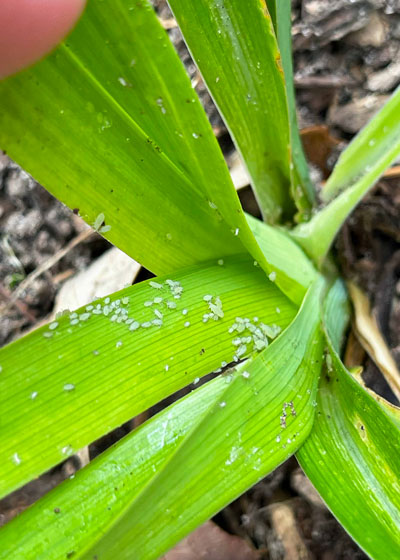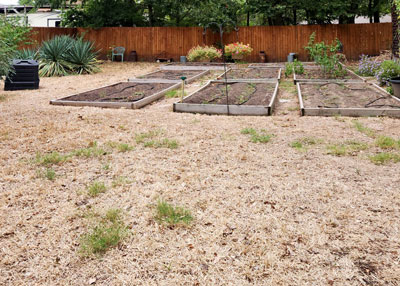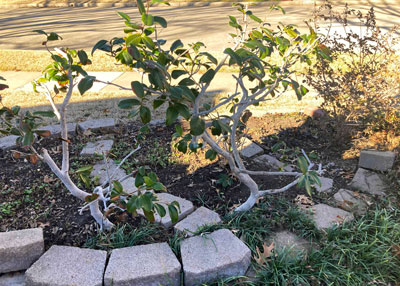Q&A – Ask Neil: February 15, 2024
(Please read these instructions carefully.)
Before you post your question, please look at recent issues to see if someone else has already asked it. You might find your answer there.
How to submit your question…
(Note: You may need to allow a pop-up window to come up in order to get the link for sending your photo(s). If you have already submitted your question and didn’t see the pop-up window, please click here.)
• Click the link provided below to post your question. After you submit your question, a new window will pop up giving you the address to which you can e-mail a SHARP, HIGH-RESOLUTION PHOTO to accompany your question. Please DO NOT SEND THUMBNAIL PHOTOS in case I need to zoom in to see things.
• Click here to post your question.
• Please ONLY POST YOUR QUESTION ONE TIME. We can only accept a set number of questions each week, and when we get duplicates it costs other people their chances.
• One question per reader, please.
• Please use this only for posting questions – not for standard emails.
• Watch for your answer in the following week’s e-gardens.
• I choose those of greatest general interest. For example, plant IDs seldom make the cut.
• I must have your first name or initials.
• I must have your city or county. (Texas is a very large state.)
QUESTION 1
HOW CAN I GET RID OF APHIDS ON MY DAYLILIES?
Question: How do you suggest I eliminate aphids from my daylilies? They seem to hang around every year. Lisa R., Nacogdoches.

Answer: I start with a hard blast of water out of a pistol spray nozzle on the end of my garden hose. Usually, you can disturb their population enough that they don’t come back. However, they’re easily controlled by almost any general-purpose organic or inorganic insecticide as a spray. The females give birth to living young without mating, so populations build quickly. The sooner you employ control measures the better.
QUESTION 2
HOW DO YOU TRAIN WINTERCREEPER EUONYMUS?
Question: How do you manage your wintercreeper euonymus without constant hand trimming? I’m on my knees every month weaving the runners through the growth and clipping the tall stems out of the shrubs. Liz R., Hurst.
Answer: I have never gotten on my hands and knees. You’re working too hard. The first 12-18 months of a new planting I’ll lift runners and move them left or right to cover a bare spot. I do the same when I have a runner growing out over the lawn or across the walk. I rarely trim those for the first couple of years. However, I may snip off a few of the rogue runners that are determined to grow straight up. I cut them just a few inches so they’re not so unsightly, but I only do that if I can’t lay them down in the bare areas. By the end of the second year or certainly by the third year I let everything go and just use my line trimmer to keep it all cut back to about 4 inches. Yes, they do snake their way up through nearby shrubs. I do have to reach in and pull them back out so that I can cut those, but that takes only a few total minutes per year. Wintercreeper is more work in its first 18 months than it will be in its next 18 years combined.
QUESTION 3
IS IT TOO LATE TO TRIM MY LIVE OAK?
Question: Is it too late to trim a large, established live oak? A few limbs look like a strong wind could cause them to scrape across the bricks and roof of our house. I have noticed information suggesting that oak wilt can result from trimming too late. Shirley G., Waco.
Answer: You always want to prune oaks between late June/early July and February 1 (all depending on where you are in Texas). Spring is the time that the fungal mats that can serve to spread oak wilt form beneath the bark of infected red oaks. Bark beetles are active during that time. However, unless city ordinances forbid pruning during spring, ISA Certified Arborists will know the correct techniques for pruning and can solve emergency situations such as limbs damaging roofs, blocking visibility at intersections, or interfering with vehicular or pedestrian traffic. Cut surfaces should be sealed with paint immediately following pruning.
QUESTION 4
HOW CAN I AMEND MY CLAY SOIL?
Question: After losing my St. Augustine to chinch bugs I want to add two more raised beds. How should I amend the clay soil? And where can I find the expanded shale you write about? I have been unable to find it. Dorothy C., Grayson County.

Answer: When I am amending my clay soil, I combine about 5 inches of organic matter into the top foot of soil. That would include equal amounts of well-rotted compost, finely ground pine bark mulch, fully decayed manure, and sphagnum peat moss. I also add 1 inch of the expanded shale you referenced. It is available from better sand and gravel dealers, or your local retail garden center can order it in from their wholesalers. The latter source, however, will probably be in smaller bagged amounts and may not be as economical.
QUESTION 5
CAN I OVERSEED MY ST. AUGUSTINE THIS SPRING?
Question: Can I overseed my St. Augustine this spring to help fill the thin spots? Will the St. Augustine choke it out later when it begins to grow? Can they co-exist? Steve C., Bedford.
Answer: I would not recommend it. You won’t find St. Augustine seed, so that means you’ll be planting either bermudagrass seed or some mix of northern cool-season grasses. Either way you’ll end up with an unattractive combination of grasses that won’t look right together. Plant new pieces of sod, but before you spend money on it, be sure there is ample sunlight for the St. Augustine. Even though it is our most shade-tolerant grass, even St. Augustine needs 6 hours of sunlight daily during the summer. Not a week goes by without my being asked about finding a grass to plant where St. Augustine has failed beneath trees. I see people wasting so much money on quick fixes when in reality they may need to change over to shade-tolerant groundcovers.
QUESTION 6
HOW CAN I PROMOTE LOWER LEAF PRODUCTION?
Question: What would you suggest for my 20+ year-old camellias? I did some trimming last year hoping for lower leaf fill, but without much success. Do they need major pruning to promote new lower leaves? They have been beautiful until the past few winters. Shan F., Carrollton.

Answer: My wife and I and our family lived in Farmers Branch adjacent to Carrollton for seven years – right off Josey Lane. In those seven years I never saw a camellia growing there. That doesn’t mean there weren’t any. There just weren’t many. The pH of the soil is far too high for them. They need very acidic soil. And the temperatures get far too cold for them. They are best suited one or two Hardiness Zones to our south. (Ignore the new USDA Hardiness Zone Map that says that DFW is Zone 8 – look at temperatures of recent winters – as you referenced in your question.) In my opinion, you’ve done very well to keep your plant alive for all 20 years. Trimming won’t help. It needs different soil, and I fear that it doesn’t have the vigor left to be dug and replanted after two or three bales of sphagnum peat were put into a raised bed. If you were going to go to all that trouble and expense, you’d be better off starting with a new plant. Most camellia enthusiasts in the Metroplex grow their plants in large containers so that they can be brought into protection during cold weather. If you want to grow one outdoors, stick with a sasanqua camellia. They are one Hardiness Zone more durable in winter.
QUESTION 7
I’VE MISSED MY PRE-EMERGENT WINDOW FOR GRASSBURS!
Question: Not a question, but an observation – sandburs (grassburs) had germinated and were growing in Rockport on February 6. The photo is from my pasture, but lawns would be just the same. Just passing along the information. Travis J., Rockport.

Answer: Isn’t this crazy. As mentioned earlier, on Sunday the Texas Panhandle got blanketed by up to 10 inches of snow, and here I’m replying to your comment from days before that. Golly, it’s tough to give advice for an entire state as big as Texas! You are absolutely correct. Those of you in Deep South Texas and/or right along the warm Gulf Coast experience spring weeks earlier than most of the rest of us. In fact, as you know, there are winters when fall overlaps into spring. Winter never stops by to visit. You almost have to draw up your own individual calendar. That’s why it’s always a good idea to keep a log of when you have to do things in your landscape, lawn, and garden. (Thanks for the tip.)
